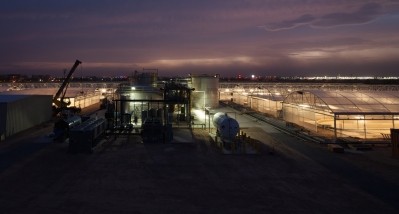Special edition: The unlimited potential of algae

Qualitas is making a lot of noise in the algal omega-3 sector with the development of its algal oil from a salt water, photosynthetic species of algae called Nannochloropsis oculata. The species yields an oil rich in EPA (with no DHA) that is bound to phospholipids and glycolipds, known together as polar lipids.
The phospholipid connection is drawing parallels to krill oil, and claims of better digestibility and better bioavailability of its omega 3s as compared to fish oils.
For more information on these ingredients, please click on the following links:
Qualitas Health: We’re filling the hole in the market for unopposed EPA omega-3
New algae omega 3s player Qualitas goes head to head with krill
Beyond spirulina and astaxanthin
Florida-based Valensa International is also exploring the potential of algae-derived nutraceuticals with its multi-year, multi-million-dollar agreement with algae-based supplement maker Algaeon Inc.
Valensa’s ingredient and formulation portfolio already includes such algae-based products as Zanthin brand Astaxanthin, Parry Organic Spirulina, SpiruZan (astaxanthin + spirulina) tablets and phycocyanin-coated Pur-Blue SpiruZan.
According to Valensa president and CEO Dr. Rudi E. Moerck, the algae technology relationship with Algaeon provides a significant additional supplier of algae biomass and extracts to Valensa to allow the company to grow its portfolio of advanced condition-specific products.
“Valensa is a rapidly growing nutraceutical company with a thriving astaxanthin-based, condition-specific formulation business,” said Moerck in a statement. “We are excited and confident that this collaboration with Algaeon will provide additional algae-sourced ingredients to Valensa to ultimately expand its offerings beyond Spirulina and Astaxanthin.”
Please click here to read our coverage of this agreement and its potential.
Ultra-efficient production process
Algae Biosciences Corporation has also been making the headlines with claims that near perfect growing conditions for algae combined with an ultra-efficient production process will give the company a competitive edge in the algal ingredients market.
Andy Ayers, CEO of AlgaeBio, told us that the company’s first commercial product will be a novel product combining oil from algae generating 40% EPA and another strain generating 40% DHA, said Ayers, who recently struck a deal to supply the blend to Global Health Trax for a suite of supplements launching under the ‘Omega-3 Origins’ brand.
“We can grow two different strains, extract EPA and DHA separately, and then custom blend them so our first product will contain equal parts of EPA and DHA at a blended ratio of 40%.
Please click on the following link to read more: Algae Biosciences: What will differentiate us in algal omegas market is purity
Algae expertise does not mean nutraceutical success
The money pouring into biofuels research has buoyed the algae sector and helped companies get off the ground with technology development and initial facility buildout. But translating that expertise in growing algae at something approaching commercial scale into the manufacture of nutraceutical ingredients has been a challenge, according to Greg Sower, PhD is a toxicologist for Environ International.
“When we work with an algae company they often have their scientists and engineers who are very good at getting what they want out of the algae,” Sower told NutraIngredients-USA.
“Then you have the C suite which clearly is aware of their business and their opportunities. But often what we have on the algae side is a lack of awareness of how you can get that final product to market, what some of the hurdles are and how those hurdles can be affected by technology,” he said.
Please click here to read more.
BASF explores the potential
Earlier this year, BASF teamed with a Saudi firm researching algae species in open lakes around the Red Sea with a view to use the biomass in beverages and food supplements.
The National Prawn Company (NPC) has been working aquaculture prawn and algae projects in man-made lakes since the 1980s at its western Saudi Arabia base by the Red Sea.
BASF said that location was key in its interest in NPC due to the stability of the climate and potential for a stable supply of algae.
“With our portfolio in the market segments of food, beverages and dietary supplements we are able to meet and anticipate future needs. At the same time we are constantly trying to enhance nutrition quality and promote technological innovations,” said Michael Ceranski, senior VP of BASF Human Nutrition.
Please click here to read more.
The quiet approach to business development
Arizona-based Heliae has taken a quiet approach to business development. While the company is close to coming to market with a range of nutraceutical ingredients, not much has been said about them in the marketplace or the press, and that’s the way they like it.
“We’re a little bit of a different algae company,” said Nick Donowitz, director of corporate development for Heliae. “We were founded in 2008 by a few members of the Mars family. They think in very long time frame frames, fifty to 100 years out. They are long view investors. The Mars family is quiet, and at Heliae, we’ve been quiet as well. We have been doing quality R&D behind closed doors and have moved steadily toward commercialization.”
Deriving nutraceutical ingredients from algae, perhaps more than is the case with the production of many other nutraceutical ingredients, is critically dependent on the technology involved. Developing the appropriate algae technology is Heliae’s strength. Its technology is based on straddling the basic divide in the algae sector that separates companies relying on heterotrophic technology, basically using algae in a fermentation setting, and those that cultivate phototrophic organisms in a photosynthetic fashion. The company’s technology, which it calls Volaris, seeks to marry the best aspects of both approaches.
Please click here to read more.
An easy path to market?
Solarvest, based in Summerville on Prince Edward Island, had the experience that some other algae producers have had, namely that the path to market came easier in the nutraceutical sector than in other avenues.
“The company is about three years old, but the research team spent about 20 years in the animal vaccine business,” said Garth Greenham, chief operations officer.
“We started with a lot of interest in algae as a biotech product for protein expression. Algae has the ability to express highly bioactive proteins. The biotech business has been very good with viruses and bacteria, and algae was kind of new and very interesting. We have some really good intellectual property in that area,” he said.
“The hydrogen was later. The company does have intellectual property in getting algae to produce hydrogen with only water and sunlight as inputs. That is a project, but not a focus right now.
“But of course we are not getting any younger, and we knew we needed to drive the company toward some products, and we believe in omega-3s and we take them ourselves,” Greenham said.
The company specializes in the cultivation of Schizochytrium limacinum for its nutraceutical applications, an organism that in the wild inhabits the underside of Artic ice caps, said Garth Greenham, chief operations officer.
Please click here to find out more.
Omega-3 oils for nutraceutical and pharmaceutical applications, and astaxanthin
Another company developing algal ingredients is San Diego-based Cellana, which has finished its development phase and is close to entering full scale production.
Cellana grows photosynthetic algae in salt water, a technology it has been refining at its test facility on the Kona Coast of Hawaii’s Big Island. Cellana is pursuing a three pronged approach of biofuel, animal feed ingredients, and, at the highest value level and driving the bus, so to speak, are omega 3 oils for nutraceutical and pharmaceutical applications, according to CEO Martin Sabarsky. The company has also worked on astaxanthin production, he said.
“Less than 10% of the biomass we grow through photosynthesis drives 80% to 90% of the product value,” Sabarsky told NutraIngredients-USA. “But at the same time, that remaining 90% of the biomass can be a great source of fuel oils and feed in volume markets. The challenge is to address those markets in an economic way that can scale. By having a small amount of this anchor, high value product it drives the whole model.”
To read the full article, please click here.









